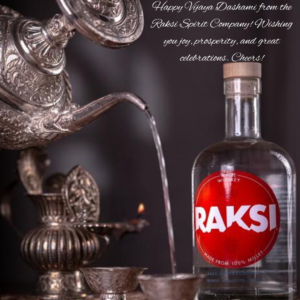As the Himalayan peaks watch over, Nepal comes alive with its most treasured festivals, Dashain and Tihar. These celebrations do more than just light up homes; they awaken a collective spirit of joy, unity, and tradition that pulses through the heart of every Nepali. It’s a time when the entire nation, from the bustling cities to the quiet mountain villages, embraces its rich culture and heritage, and nothing encapsulates this better than the role of Raksi in these moments of togetherness.
Dashain: The Celebration of Victory and Renewal
Dashain, Nepal’s grandest and most auspicious festival, unfolds over 15 days of rituals, family gatherings, and joy. It commemorates the triumph of good over evil, symbolized by goddess Durga’s victory over the demon Mahishasura. Each day of Dashain carries its own significance, building a narrative that ties the old to the new, tradition to present.
Dashain is more than a festival; it’s a reminder of life’s cyclical nature, the persistence of hope, and the bonds that keep communities strong.
Tihar: The Festival of Lights and Bonds
As Dashain’s echoes fade, Tihar lights up Nepal with its own charm. Also known as Deepawali, this five-day festival honors the connection between humans, animals, and the divine, painting the streets and homes in glowing patterns of light and color.
Tihar is a festival that radiates gratitude and respect, connecting not just people, but all living beings, in a celebration of life and light.
Raksi: The Spirit of Nepali Festivities
No Nepali festival is complete without the cheer of traditional drinks, and Raksi is the soul of it all. This distilled millet liquor, often referred to as Millet Whiskey or Raksi Whiskey, is more than just a beverage; it’s a symbol of heritage, hospitality, and the warmth of Nepali culture.
The preparation of Raksi is an art, handed down through generations, with each sip capturing the essence of Nepal’s rugged landscapes and the perseverance of its people. Its strong, distinct flavor warms not just the body but also the soul, enhancing the festive spirit that flows through every gathering.
The Essence of Dashain, Tihar, and Raksi
Dashain and Tihar are more than just festivals; they are a living expression of Nepal’s soul, where spirituality, joy, and tradition blend seamlessly. They are times when families come together, when the old stories are retold, and new memories are made. And at the center of it all, Raksi stands as a timeless companion, celebrating life’s highs and softening its lows.
As the flickering lights of diyo glow against the Himalayan night and the air fills with the sound of traditional music and laughter, you truly feel the heartbeat of Nepal—vibrant, enduring, and alive in every moment of these beautiful festivities.

Photo: riteshrestha